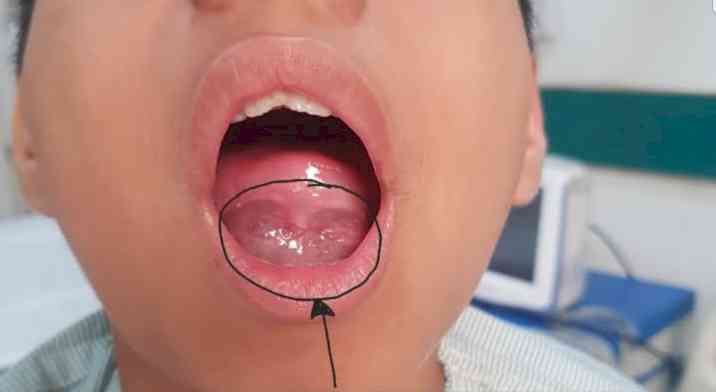11-year-old-boy with mass under tongue treated successfully at Ivy
An 11 year boy suffering from ranula, which is a condition of gradually increasing mass under the surface of tongue and with difficulty in swallowing was treated successfully at Ivy Hospital, Mohali recently.

Mohali, June 7, 2022: An 11 year boy suffering from ranula, which is a condition of gradually increasing mass under the surface of tongue and with difficulty in swallowing was treated successfully at Ivy Hospital, Mohali recently.
Due to the problem, his speech was also not understandable as the mass was hampering the tongue movements making both the speech and swallowing process difficult for the kid, informed Dr Navdeep Kaur Boparai, ENT expert at Ivy Mohali who treated the boy.
She said that boy MRI showed a well-defined lesion in the sublingual space across the midline measuring 6.2x1.7x4 cm. The lesion was found to be extending into the right submandibular space herniating through the mylohyoid defect. Lesion was also seen abutting the right parapharyngeal space. A diagnosis of plunging ranula was made and after proper PAC clearance the patient was taken up for surgery under GA, informed Dr Boparai.
Both introral and cervical-approach were used to remove the plunging ranula in totality without rupturing the mass along with the right sunlingual and right submandibular gland .In the postoperative period patient was kept on RT feed and suture removal was done on the 7th postoperative day.
A ranula is a mucus filled cavity, a mucocele, in the floor of the mouth in relation to the sublingual gland. The name “ranula” has been derived from the Latin word “rana” which means “frog.” The swelling resembles a frog's translucent underbelly or air sacs. Ranulas have a prevalence of 0.2 cases per 1000 persons, The prevalence of cervical (plunging) ranulas is not known; however, these lesions are considered uncommon, Dr Boparai said.
Ranulas usually occur in children and young adults, with the peak frequency in the second decade. The cervical variant tends to occur a little later in the third decade.
Oral and plunging ranulas, if large, may affect swallowing, speech, or mastication and may result in airway obstruction. The very rare thoracic ranula may compromise respiratory function and may be life threatening.



 City Air News
City Air News 








